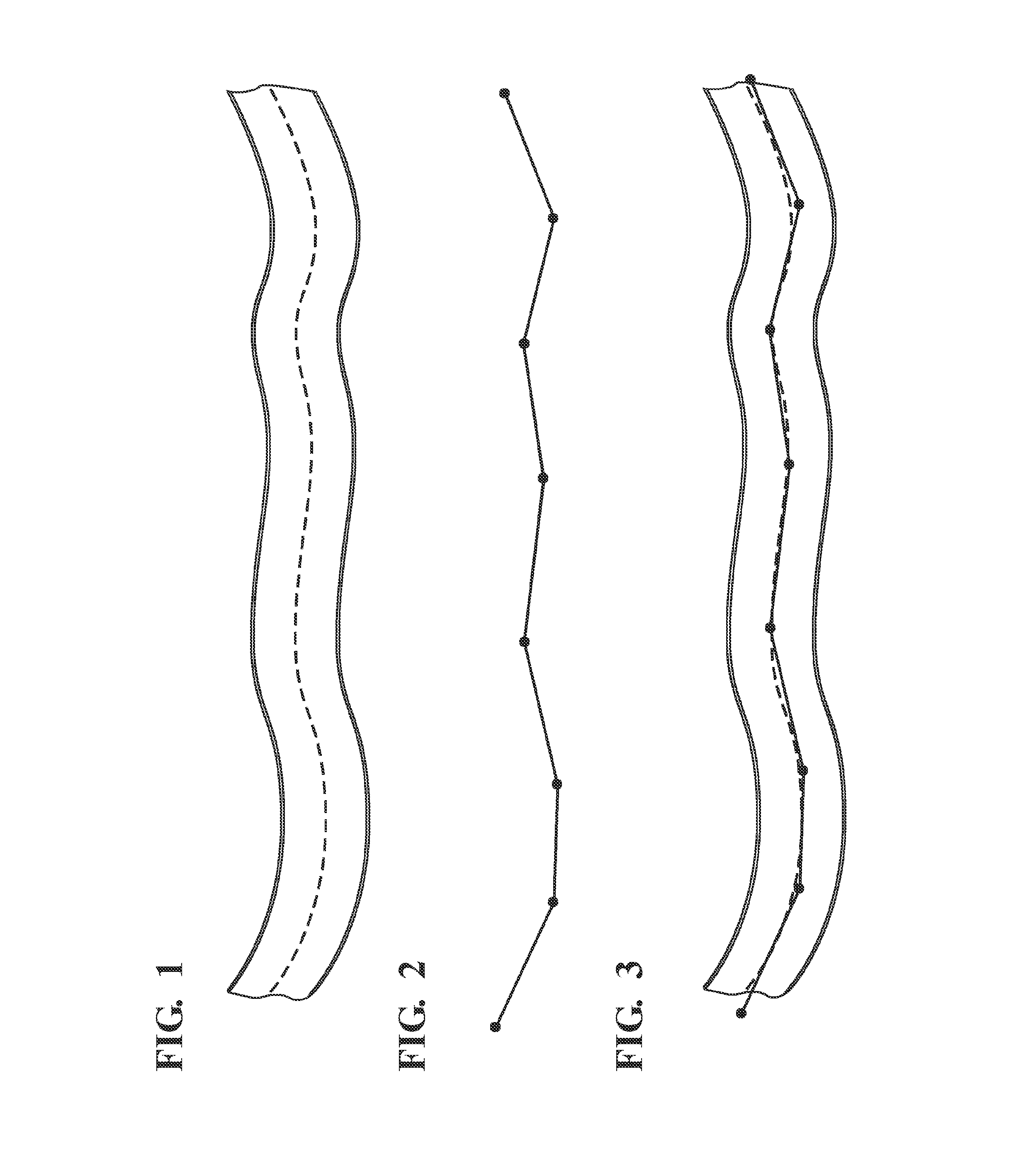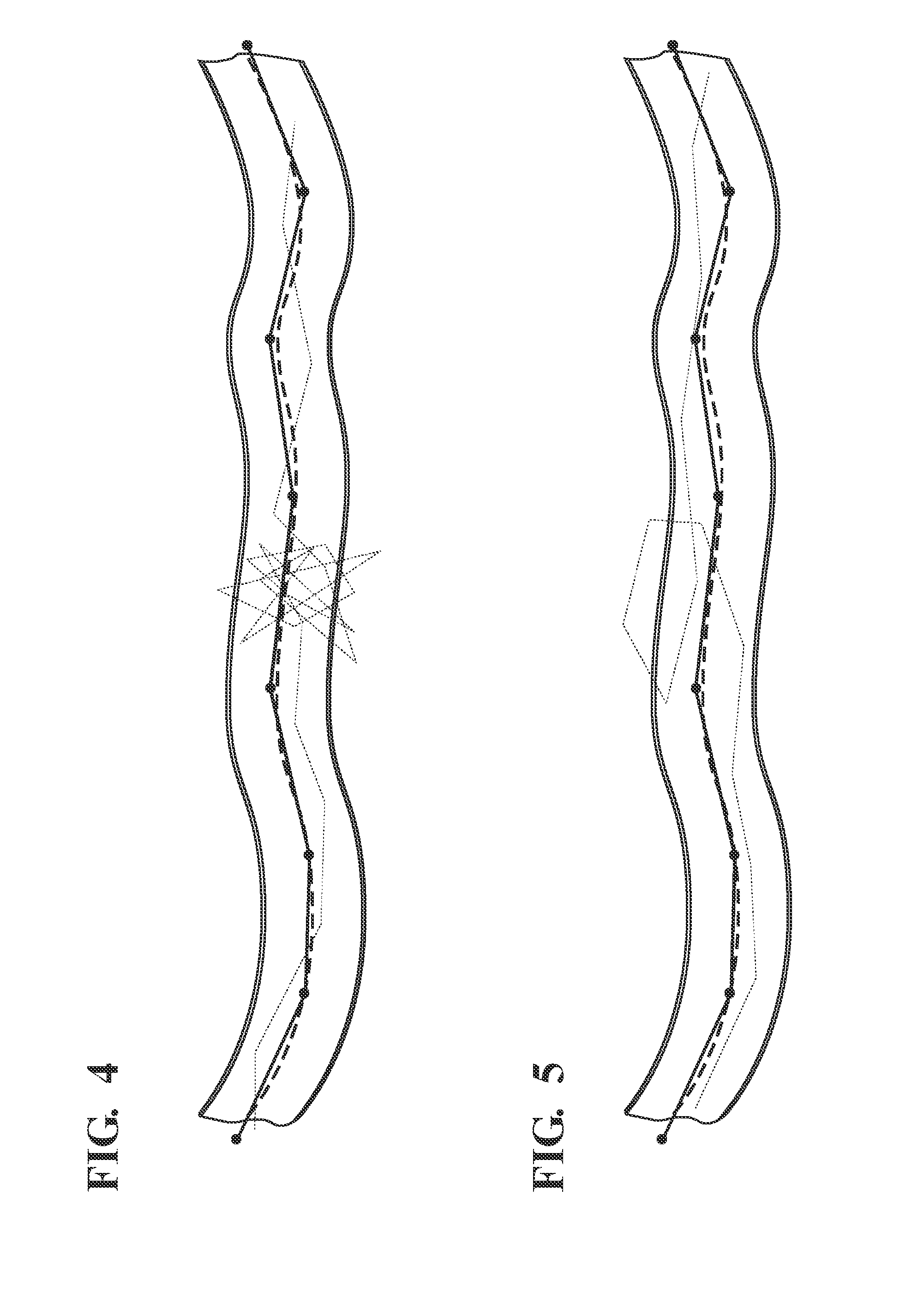Graph based topological map matching
a topological map and graph technology, applied in the field of analyzing probe data, can solve the problems of high cost of collecting and processing road information, inability to pass directly between unrelated line segments of traffic along roads in reality, and inability to accurately match probe traces to a digital vector map. achieve the effect of simplifying and scoring the graph and high matching quality
- Summary
- Abstract
- Description
- Claims
- Application Information
AI Technical Summary
Benefits of technology
Problems solved by technology
Method used
Image
Examples
Embodiment Construction
[0029]Referring to the Figures, wherein like numerals indicate like or corresponding parts throughout the several views, a general overview of the map matching process according to this invention is shown in FIG. 8. A digital map 20 provides data for a road network. The digital vector map 20 is configured to store a plurality of line segments spatially associated within a coordinate system. The line segments within the digital map 20 are either respectively topologically related or topologically unrelated to one another. Each line segment contains at least one edge. When a line segment has a plurality edges, shape points interconnect the edges. Each line segment terminates at a junction.
[0030]A source of probe data 22 provides at least one, but more typically large numbers of probe traces. Each trace contains a sequence of spatially distributed trace points positioned within the coordinate system of the digital vector map. A probe trace of this type usually represents the movement o...
PUM
 Login to View More
Login to View More Abstract
Description
Claims
Application Information
 Login to View More
Login to View More - R&D
- Intellectual Property
- Life Sciences
- Materials
- Tech Scout
- Unparalleled Data Quality
- Higher Quality Content
- 60% Fewer Hallucinations
Browse by: Latest US Patents, China's latest patents, Technical Efficacy Thesaurus, Application Domain, Technology Topic, Popular Technical Reports.
© 2025 PatSnap. All rights reserved.Legal|Privacy policy|Modern Slavery Act Transparency Statement|Sitemap|About US| Contact US: help@patsnap.com



